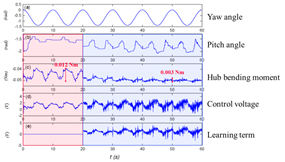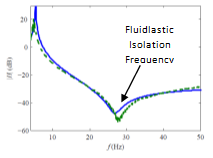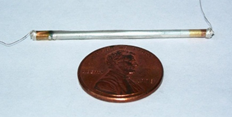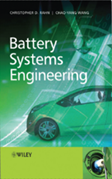Research Areas
|
Click here for a list of publications.
Smart Structures 
Using Lyapunov-based approaches that do not require discretization, we design controllers that asymptotically stabilize the distributed model. This mathematically elegant method eliminates the spillover instabilities associated with traditional control approaches, produces simple, low order, physically intuitive controllers, and is applicable to nonlinear systems. The approach applies mathematical tools based on functional analysis, semigroup theory, and Lyapunov's Direct Method to a specific mechatronic system. In addition, Lyapunov-based techniques such as adaptive and backstepping control can be used to account for parametric uncertainty and electrical dynamics, respectively. Unlike most researchers in this area who focus exclusively on mathematics, we experimentally implement the proposed controllers and demonstrate the improved performance provided by the control. This often requires the development of novel mechatronic sensing and actuation schemes to measure the required feedback variables and apply the required system inputs. The figure shows, for example, a distributed parameter model-based control experiment for repetitive learning force tracking in a whisker sensor for the Navy.

We also work in passive vibration control approaches such as multifunctional adaptive structure concept through investigating the unique and desirable characteristics of plants; including nastic (rapid plant motions) actuation with large force and stroke and self-sensing/reconfiguration/healing. More specifically, we propose to develop and investigate new bio-actuation/bio-sensing ideas building upon innovations inspired by the mechanical, chemical, and electrical properties of plant cells. We demonstrated that a fluidlastic cell coupled to a mass can isolate vibration at a specific frequency. The figure shows the theoretically predicted and experimentally demonstrated transmission isolation zero at around 28Hz.
- Modeling, Design, and Experimental Validation of a Tailboom Vibration Absorber Using Fluidic Flexible Matrix Composite Tubes |
|
Advanced Actuators
- Design, Fabrication, Modeling, and Experimental Testing of a Piezoelectric Flextensional Microactuator |
 
|
Battery Systems Engineering
|
The MRL leads research initiatives in new field of battery systems engineering. The Battery and Energy Storage Technology Center (BEST) Center has been created under to bring together the campus-wide expertise in batteries and battery systems. Funding from DOE and industry has led to the development of model-based estimators and battery management systems for hybrid vehicles. This work involves the development of first principles models of the diffusion and electrochemistry that govern battery dynamics. These reduced order models can then be used as the basis for Kalman filters and parameter estimators that predict real-time state of charge, internal battery conditions, and state of health. Dynamic current limits, based on minimizing the predominant damage mechanism, enable long lived energy storage systems.
- Lithium Ion Battery Modeling, Estimation, and Aging for Hybrid Electric Vehicle Applications |


|

